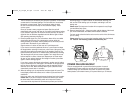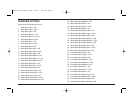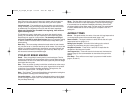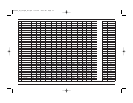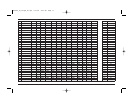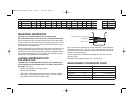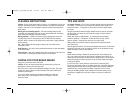
TYPES OF BREAD
White – The white bread cycle uses primarily white flour.
Whole wheat bread – Whole wheat bread is a yeast bread that is made with
a significant portion of whole wheat flour (50% or more), rather than with all
white bread flour. Breads made from whole wheat flour are more nutritious
because the flour is milled from the entire wheat berry (including the bran and
the germ). Using whole wheat flour produces a bread that is brown to dark
brown in colour (when all whole wheat flour is used), and the breads are more
flavourful and healthful than breads made with refined white flours (even
though “lost” nutrients are added back into white flours).
French/Italian – French/Italian breads require special timing and
temperatures to achieve that wonderful crispy, nicely browned crust.
Quick bread – (Referred to as batter breads in some cookbooks.) Cake-like
in texture, they are usually baked in a shaped pan such as a muffin tin or loaf
pan. They are a batter-type bread rather than a yeast dough, and get their
leavening from baking powder, baking soda and eggs. Mix-ins must be added
at the very beginning of the cycle with other basic ingredients.
If a quick bread is a little moist on top when baking is complete (moisture will
depend on ingredients of the quick bread), leave it in the bread maker for an
extra 10 to 15 minutes with no heat, and it will continue baking – this is called
“after cooking.”
Sweet bread – The Sweet Breads settings are for baking breads with high
amounts of sugar, fats and proteins, all of which tend to increase browning.
Low-carb – Low-carb baking is unique in its ingredients. Because low/lower-
carb breads are low in sugar, the baking time is different. It is also important
not to over-mix or over-knead when preparing low/lower-carb breads. Our
exclusive low-carb setting assures proper kneading and baking times. Mix-ins
must be added at the very beginning of the cycle with other basic ingredients.
Gluten-free – One in approximately 100 people has an allergy or sensitivity to
gluten. Since gluten is found in most flours used in traditional bread baking, the
ingredients to create gluten-free breads are unique. While they are “yeast
breads,” the doughs are generally wetter and more like a batter. It is also
important not to over-mix or over-knead gluten-free doughs. There is only
one rise, and due to the high moisture content, baking time is increased. Our
exclusive gluten-free setting makes it easy to get the right results. Mix-ins must
be added at the very beginning of the cycle with other basic ingredients.
Dough/pizza dough –There are two ways for preparing dough in the bread
maker, if you intend to bake your bread, rolls, cakes, and so on, in your
conventional oven.
Our Dough/pizza dough cycle mixes ingredients, kneads and takes the dough
through the first rise cycle. It is appropriate for almost any dough recipe
(except gluten-free or low-carb) and ideal for pizza or pretzel dough.
It is intended that dough will be removed, deflated and shaped by hand and
allowed to rise 1 or 2 more times out of the bread maker (see pages 49–64
for recipes).
Alternatively, you can choose a specific bread type from the menu options,
and remove the dough when the signal before last rise sounds. This will take
you through two rise cycles.
This method is suitable for any alternate loaf shape, round loaf, dinner
rolls, braided challah bread, and so on. Last rise will take place outside the
bread maker.
Artisan dough – This cycle allows the preparation of artisan breads.
There are several long, slow, cool rises that will enhance the development
of texture, taste and crust in the final shaped and baked bread.
Rapid – Rapid cycle options are provided for a number of menu choices:
white bread, wheat bread, French/Italian and quick bread. The time saving
is achieved with the use of rapid rise yeast. Any rapid cycle must be used with
a recipe using rapid rise yeast, or the bread will not rise and bake properly.
Almost any recipe can be modified by replacing standard yeast with an equal
or larger amount of rapid rise yeast.
Jams and chutneys – The bread maker is a great cooking environment
for homemade jams and chutneys. The paddle automatically keeps the
ingredients stirring through the process. The heating element is placed in a
way that the contents of the pot will not get burned. We provide recipes
starting on page 79 to get you started. They make a wonderful complement
to freshly baked bread!
8
cbk200c_ib_recipe_en.qxd 5/19/05 9:05 AM Page 9








